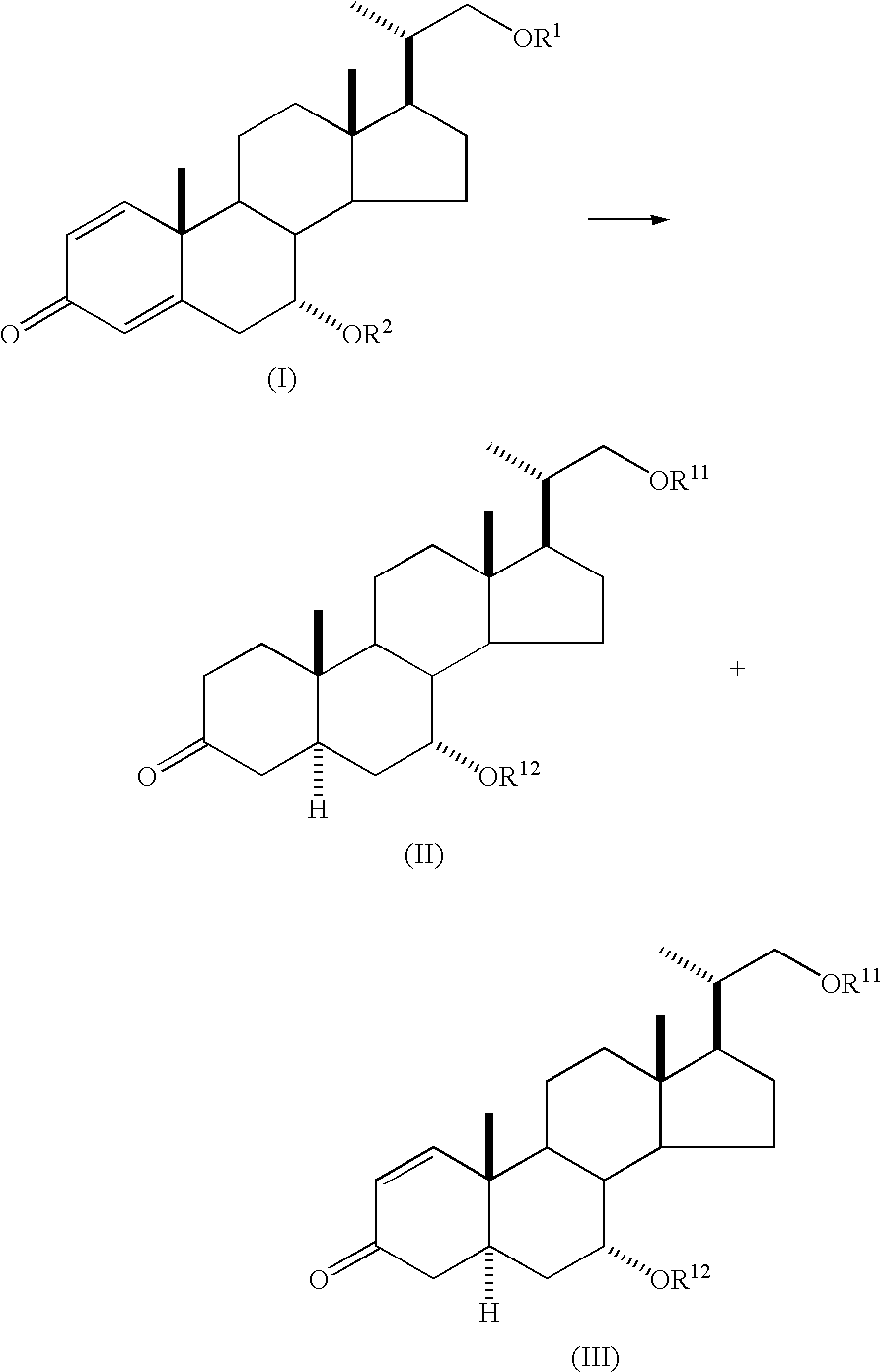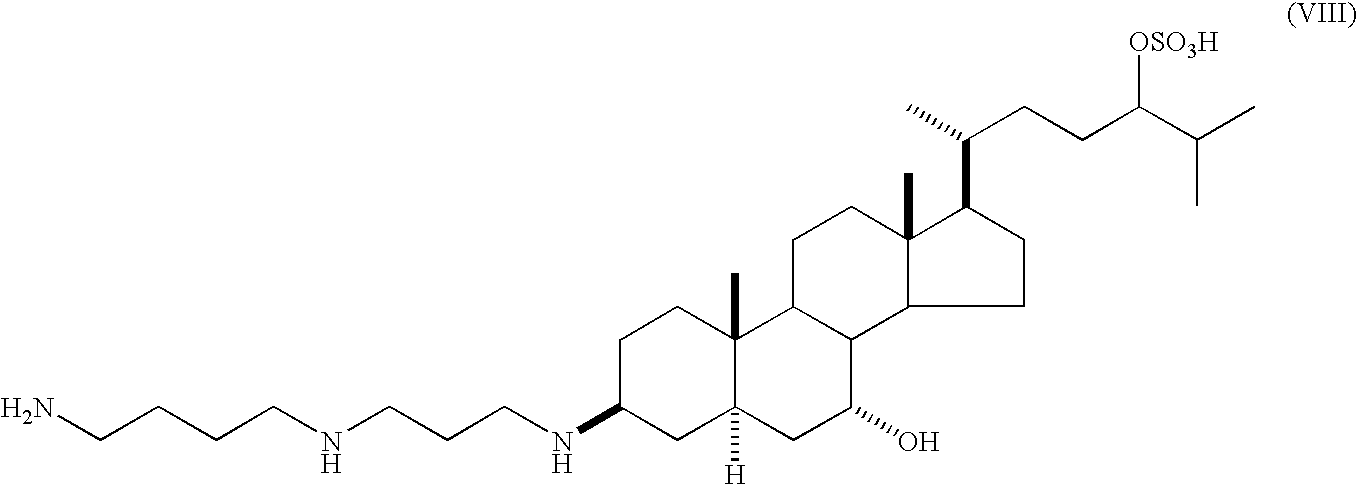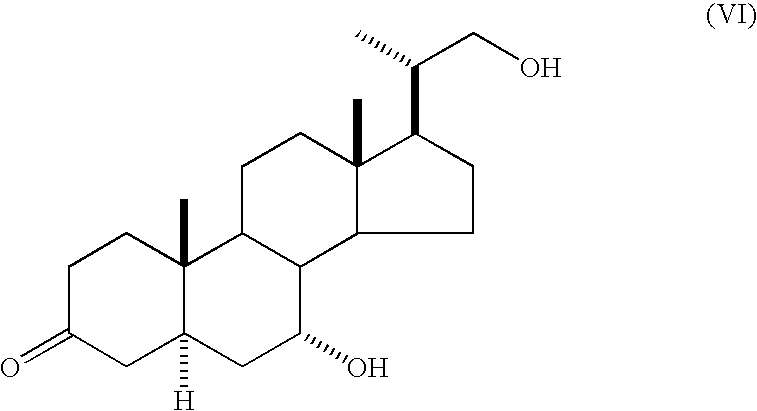Method for producing 5alpha-pregnane derivative
- Summary
- Abstract
- Description
- Claims
- Application Information
AI Technical Summary
Benefits of technology
Problems solved by technology
Method used
Image
Examples
reference example 1
Production of (20S)-21-tert-butyldimethylsilyloxy-7α-hydroxy-20-methylpregna-1,4-dien-3-one
[0065] Under a nitrogen atmosphere, (20S)-7α,21-dihydroxy-20-methylpregna-1,4-dien-3-one (8.79 g, 25.5 mmol), imidazole (2.60 g, 38.3 mmol) and tetrahydrofuran (100 ml) were placed in a 200 ml flask, dissolved by stirring and ice-cooled. To this solution was added dropwise a solution of tert-butyldimethylchlorosilane (5.00 g, 33.2 mmol) dissolved in tetrahydrofuran (20 ml) while maintaining the inner temperature at 0° C. to 10° C. After completion of the addition, the mixture was allowed to warm to room temperature and further stirred for 1 hr. The reaction solution was added to water (200 ml) and the mixture was extracted twice with ethyl acetate (100 ml). The aqueous layer was separated, and the organic layer was washed with saturated brine (100 ml), dried over anhydrous sodium sulfate and concentrated. The obtained crude product was purified by silica gel column chromatography to give (20S...
example 1
Production of a Mixture of (20S)-21-tert-butyldimethylsilyloxy-7α-hydroxy-20-methyl-5α-pregn-3-one and (20S)-21-tert-butyldimethylsilyloxy-7α-hydroxy-20-methyl-5α-pregn-1-en-3-one
[0067] Under a nitrogen atmosphere, tetrahydrofuran (85 ml), (20S)-21-tert-butyldimethylsilyloxy-7α-hydroxy-20-methylpregna-1,4-dien-3-one (5.00 g, 10.9 mmol) and tert-butanol (3.47 g, 46.8 mmol) were placed in a 300 ml three-necked flask. The mixture was cooled to below −50° C. and liquid ammonia (85 ml) was added. Then, metal lithium (0.32 g, 46.1 mmol) was slowly added while maintaining the inner temperature at −50° C. to −40° C. After completion of the addition, the mixture was further stirred at −40° C. for 2 hr. Ammonium acetate (3.61 g, 46.8 mmol) was added to the reaction solution, and the mixture was stirred for 12 hr to remove ammonia while allowing the reaction mixture to warm to room temperature. To the obtained tetrahydrofuran solution was added 15% by mass of an aqueous sulfuric acid solution...
example 2
Production of a Mixture of (20S)-7α,21-dihydroxy-20-methyl-5α-pregn-3-one and (20S)-7α,21-dihydroxy-20-methyl-5α-pregn-1-en-3-one
[0068] Under a nitrogen atmosphere, a tetrahydrofuran solution containing (20S)-21-tert-butyldimethylsilyloxy-7α-hydroxy-20-methyl-5α-pregn-3-one (3.81 g, 8.2 mmol) and (20S)-21-tert-butyldimethylsilyloxy-7α-hydroxy-20-methyl-5α-pregn-1-en-3-one (0.65 g, 1.4 mmol), obtained in Example 1, was placed in a 200 ml three-necked flask, then 6N hydrochloric acid (2 ml) was added, and the mixture was stirred at 40° C. for 2 hr. After confirmation of the disappearance of the raw material by TLC, the reaction solution was allowed to cool to room temperature. The aqueous layer was adjusted to pH 8 with 10% by mass of an aqueous sodium hydroxide solution, and the organic layer was separated. The organic layer was analyzed by HPLC and found to contain (20S)-7α,21-dihydroxy-20-methyl-5α-pregn-3-one (2.76 g, yield 96%) and (20S)-7α,21-dihydroxy-20-methyl-5α-pregn-1-en-3...
PUM
 Login to View More
Login to View More Abstract
Description
Claims
Application Information
 Login to View More
Login to View More - R&D
- Intellectual Property
- Life Sciences
- Materials
- Tech Scout
- Unparalleled Data Quality
- Higher Quality Content
- 60% Fewer Hallucinations
Browse by: Latest US Patents, China's latest patents, Technical Efficacy Thesaurus, Application Domain, Technology Topic, Popular Technical Reports.
© 2025 PatSnap. All rights reserved.Legal|Privacy policy|Modern Slavery Act Transparency Statement|Sitemap|About US| Contact US: help@patsnap.com



